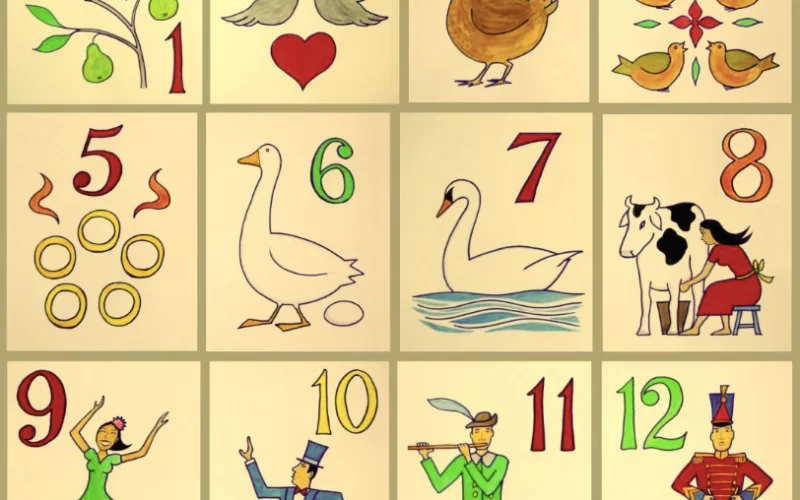The Twelve Days of Christmas

We have all heard the nonsense rhyme, “The Twelve Days of Christmas” set to music, but what we are not familiar with is its serious purpose when it was written.
Between 1558 and 1829 until Parliament finally emancipated Catholics in England, Catholics were prohibited from public or private practice of their faith by law. It was a crime to be a Catholic, so secrecy was important. To be caught practicing the Catholic faith or caught with “written words” indicating adherence to the Catholic faith could mean imprisonment or capital punishment in a brutal fashion.
As a result, Catholics developed “The Twelve Days of Christmas” set to song and repetition so that Catholic youngsters would learn the essence of their faith under the cover of symbols. In the stanzas “true love” does not refer to earthly love but God himself and “me” refers to every baptized person.
So the elements of “The Twelve Days of Christmas” unfolds for the reader as a bit of a religious tract outlining the tenants of the Catholic faith, although its original reasons for being has been lost until now.
One Partridge in the Pear Tree – Jesus Christ, Son of God.
Two Turtle Doves – Old and New Testaments.
Three French Hens – faith, hope and charity theological virtues.
Four Calling Birds – 4 Gospels or the 4 Evangelists (Matthew, Mark, Luke, and John).
Five Golden Rings – first five books of the Old Testament known as the Pentateuch outlining the history of the human fall from grace.
Six Geese a-laying – 6 days of creation.
Seven Swans a-swimming – 7 sacraments or 7 gifts (wisdom, understanding, counsel fortitude, knowledge, piety, fear of God) of the Holy Spirit.
Eight Maids a-milking – 8 beatitudes.
Nine Ladies a-dancing – 9 fruits (love, joy, peace, patience, kindness, faithfulness, goodness, gentleness, and self-control) of the Holy Spirit.
Ten Lords a-leaping – 10 Commandments.
Eleven Pipers piping – 11 faithful apostles.
Twelve Drummers a-drumming – 12 points of doctrine in the Apostle’s Creed.
So you have an outline of the Catholic faith that parents could go on and explain to their children without having to rely on the written word which was learned by repetition. As emancipation of Catholics set in, the original meaning of “The Twelve Days of Christmas” passed by the wayside and the rhyme that we know emerged with no religious significance.
Happy Holidays to All!






Thanks for sharing this, I had never heard of this before.
Interesting! There’s always been lots of significance and symbolism tied to numbers in the Bible, so this isn’t entirely a shock. But it is a surprise. By first appearance the words seem very materialistic, in a 16-18th century way. Religion, in this song, was not on the radar.
A pretty convincing takedown of this theory here. https://www.snopes.com/fact-check/twelve-days-christmas/. “All of the religious tenets supposedly preserved by the song “The Twelve Days of Christmas” (with the possible exception of the number of sacraments) were shared by Catholics and Anglicans alike: Both groups’ Bibles included the Old and New Testaments, both contained the five books that form the Pentateuch, both had the Four Gospels, both included God’s creation of the universe in six days as described in Genesis, and both enumerated the Ten Commandments….Conversely, none of the important differences that would obviously distinguish a Catholic from a Protestant is mentioned here. A Catholic would have good reason not to possess or reveal anything that would indicate his allegiance to the Pope or his participation in the sacrament of penance (also known as Confession), but nothing of that nature is encapsulated in the explanation of the symbolism supposedly to be found in “The Twelve Days of Christmas.”
Obviously it has to do with Epiphany. All else is frosting on the meaning.
This is beautiful, thank you for sharing!